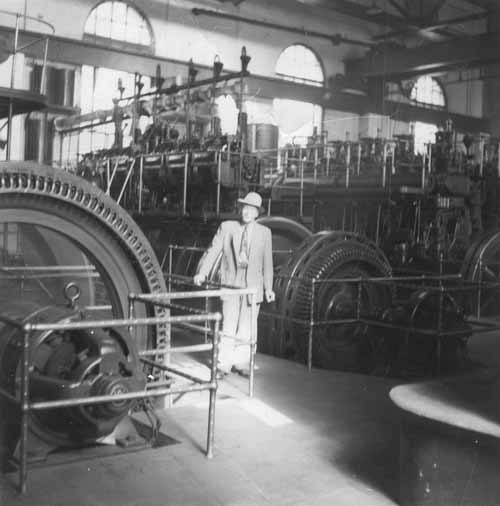Heritage Day 2012 celebrated the generation of power in Canada, and Sunday at the Western Development Museum branch in Yorkton Sheila Harris looked back on her father's career in the business.
Harris' father Herb Linfoot had a long career in power generation including managing the Yorkton Power Plant for a time up until its closure in 1960.
"My Dad began his power production career at the age of 17 in 1923 at the Kindersley Power House. He received his steam and diesel engineer certificates by taking correspondence courses and hands on training. He retired in 1967 as Head of Diesel Power production in Saskatchewan after 44 years working for Town Councils, Canadian Utilities, Saskatchewan Power Commission and finally the Saskatchewan Power Corporation," Harris told those attending the presentation Sunday.
Harris said she certainly recalls the local power plants.
"I remember visiting the Power Plant many times as a young girl. The smell of diesel fuel was potent and the noise was incredible when all those big diesel engines were running. The engines had such exotic names and were always referred to by their name: the Mirrlees, De Laverne, Nordberg, Polar Atlas, Fairbanks Morse and Dominion Crossley. I also remember in the middle of the night if Dad heard an engine skip a beat he knew something was wrong and would go to the plant to solve the problem," she said.
In 1973 Linfoot wrote an article of his memories of power production for the Sask Power Hi Lines magazine.
"There are perhaps only a few who can recall when "ox-power " was the primary source of energy in the province. Most homesteaders, including my father, started farming with four to six oxen, progressing to horses, steam engines, kerosene, gasoline and diesel tractors, in that order. "
"Generating electrical power in the province was in the same plane. With the advent of the automobile and storage batteries, nearly every garage owner had a gasoline engine "battery charger". This led to the running of a "highline" to the office and to the advertising sign. Next, a larger unit was installed so the home (usually next door) could be wired, then the store across the street and eventually the whole community. The garage owner found himself in a business which was far from profitable and frequently a detriment to his original business, " wrote Linfoot in the article.
Linfoot ended up in Yorkton in 1935.
"In 1935 I was transferred to Yorkton then Grenfell prior to the war. The Yorkton Plant (1912) had its problems beginning with the first unit installed, a 500 hp Mirrlees diesel broke a connecting rod and wrecked the engine. A second-hand De Laverne engine was purchased from the U.S A. and hurriedly put into service. In the meantime, two 300 hp Mirrlees units were on order and enroute to Yorkton when the ship was ordered by the Admiralty to return to England. These two engines were reportedly used in submarines during the First World War," he said.
"The third unit installed in the Yorkton Power Plant was a Nordberg 5 cylinder, two cycle air injection, 550 hp and is presently on display in the old Western Development Museum at the Yorkton Airport (location of the WDM is now on Hwy 16). This was the first engine of its model produced by Nordberg and was illustrated in several of the early diesel engineering handbooks."
Harris added the whereabouts of the engine which was at the former WDM location is currently unknown.
In the article Linfoot said the local plant continued to expand to meet local needs until its close.
"In 1928, Canadian Utilities purchased the Yorkton Plant and distribution system and installed a 550 hp four cylinder Polar Atlas unit which ran a short time before breaking its crankshaft. With a new shaft fitted, the unit was still in service when the plant closed in 1960," he stated in the magazine story.




